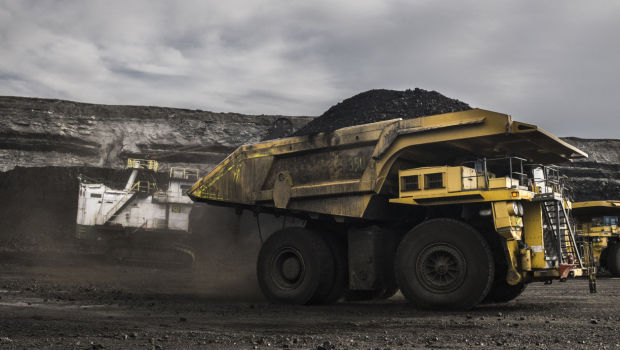Wyoming coal reverses trend, increases production in 2014:
Wyoming coal production increased by 2 percent in 2014, according to federal statistics, reversing four years of declining output in the country's top coal-producing state.
The increase was accompanied by a slight uptick in employment and offered welcome news to a beleaguered industry battered by low prices, rail backlogs and a tightening regulatory environment.
"There is still a need for affordable, clean energy," said Jonathan Downing, executive director of the Wyoming Mining Association. "That’s probably what you’re seeing there."
Wyoming coal production increased from 388 million tons in 2013 to 396 million tons in 2014, according to U.S. Mine Safety and Health Administration statistics compiled by the Star-Tribune.
The nation's largest mine led the production charge. Peabody Energy's North Antelope Rochelle complex saw output increase by 6 percent, from 111 million tons in 2013 to 118 million tons, in 2014.
Cloud Peak Energy's Antelope coal mine was up 2.3 million tons (7 percent), Peabody's Rawhide mine boosted output 1.2 million tons (9 percent), and the Jim Bridger mine, which feeds the Rocky Mountain Power coal plant by the same name, recorded a 1.2 million-ton increase.
Those gains followed a cold winter that saw utilities deplete coal stockpiles in attempts to meet heightened demand, said Ted O'Brien, president of Doyle Trading Consultants, a research firm that tracks the industry.
Rail backlogs exacerbated the situation, preventing mines from shipping coal to utilities throughout much of the year. But significant investments by rail firms throughout 2014 meant deliveries ultimately improved in the fourth quarter, O'Brien said.
"The biggest takeaway is that there continues to be underlying utility demand for Powder River Basin coal. The transportation network is continuing to improve," O'Brien said. "So far as utilities are in the market to refill stockpiles, then the market should hold for 2015."
The Wyoming production figures came in what was a generally dismal year for coal. Peabody, Arch and Alpha Natural Resources, three of the larger firms mining in the Powder River Basin, all failed to record a profit during the first three quarters of 2014.
Their earnings were affected by low international prices and high costs at their eastern mines.
Cloud Peak, which mines only in the Powder River Basin, was the sole major operator in Wyoming to record a profit. In the third quarter, the company reported making $91 million.
All four firms will report their fourth-quarter results in the coming weeks.
Production in Wyoming declined each year between 2010 and 2013. While 2014 gains restored some of the previous years' losses, they remained far short of the 442 million tons posted in 2010.
Employment followed a similar track, cresting north of 7,000 jobs in 2011 before shedding almost 400 positions in the next two years combined.
In 2014, the job picture stabilized. The 6,641 positions averaged throughout the year was nearly identical to the 6,663 jobs average in 2013. Mines added 93 jobs in 2014, finishing the year with 6,664 employees on the payroll.
Downing, the mining association director, said the production bump is welcome news at a time when state lawmakers are already grappling with low oil prices.
The state is projecting a $217 million shortfall in the 2015-16 budget cycle because of declining oil revenues.
Downing noted that the 396 million tons exceeded the forecast of state budget analysts, who had projected output of 385 million.
"That 11 million tons will help the bottom line some. It’s not a lot," he said. "But when these guys are trying to squeeze it out as they are this year, every little bit helps."








